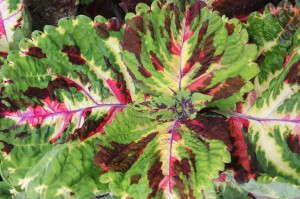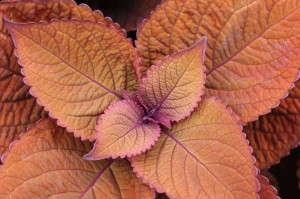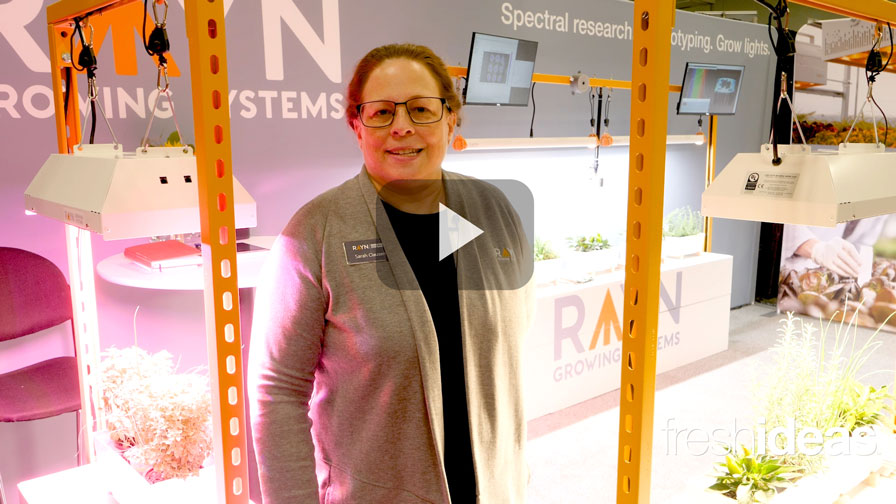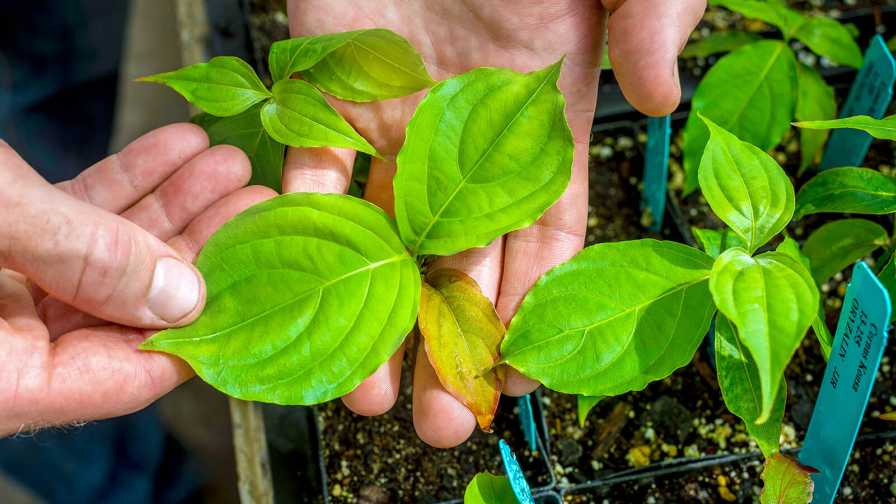Next Generation Coleus Offers Production Advantages

Coleus ‘Kong Mosaic’
Coleus has been reinvented so many times over the past 50 years that it is often hard to remember what the plants used to be like. Even the scientific name has been reinvented multiple times in just the last five years. What was once known as Coleus blumei became Solenostemon scutellarioides, which then became Plectranthus scutellarioides, where it rests for now.
Originally, coleus was a seed-produced crop used primarily as a houseplant. It was also used as an herbal remedy in tea to help folks sleep. That has all changed in the last 20 years with the infusion of sun-tolerant varieties, late-flowering varieties (to avoid deadheading and extend season of performance), new colors and new forms. In the past 10 years, there has been some very nice breeding for landscape performance and heat tolerance. Over and over, this plant has changed until what we grow today is so superior to the old varieties, it is hard to see why anyone would grow an old-fashioned coleus.
Light And Temperature Affect Color And Habit
Coleus needs bright light in production, because it stretches badly when grown under lower-light conditions. Then pinching or cut backs are required in order to hold the plants to the correct size. This is especially true for cultivars with larger leaves. Old wisdom tells you they prefer shade, but that has changed.
The only colors that can be damaged by too much light are the chartreuse forms that turn yellow on their way to scorched brown. Most other colors are able to handle higher light with no problems. Use light as a growth regulator to control stretching and you will end up with a higher-quality plant with better branching and less work. Some cultivars do need a bit more shade than others, however.
Lower light levels can cause the plant to adapt by turning green in some fashion. Darker colors get muddy as green emerges through red or purple, and many varieties will produce juvenile leaves with a green edge. This is an excellent way to determine if your light levels are too low, but it doesn’t help with retail shelf appeal. Under extremely high light, green disappears and colors begin to sharpen and darken, but if the light is too high, the foliage curls and begins to scorch.
Position the crop in the greenhouse so it gets bright light with some filtering. In general, this will always give the highest quality crop.
Temperature also has a big effect on coleus development. They are tropical in origin so they like warm temperatures. Anything below 40°F can damage or severely delay the crop. Optimum crop temperatures are in the 60°F to 80°F range.
Under warm production temperatures, the crop grows faster, and leaf color in general is brighter. Downy mildew is also more active at lower temperatures, so that’s another reason to keep temperatures at optimum levels during production.

Coleus ‘ColorBlaze Keystone Copper’
Advanced Breeding May Reduce Flowering
Early flowering in coleus is a bad thing. Flowering wrecks the crop uniformity, reduces branching and essentially makes the plant unsalable at retail. Consumers, especially experienced gardeners, know flowering signals the end of the coleus life span. The flowers detract from the appearance of the plants, so deadheading is required, meaning more work for everyone in the supply chain. Flowering can also be caused by plant stress. Low temperatures, drought or growing under short day conditions can induce flowering, even in late-flowering cultivars.
Even though it is tempting, don’t keep stock from one year to the next because plants are more likely to harbor virus and insect problems – especially under winter conditions — that can affect all your crops the following spring.
Breeders are selecting new genetics for later flowering to avoid the entire problem. Some of the best new breeding has come from Dr. Dave Clark at the University of Florida. Clark has spent the last 15 years selecting for coleus that not only can handle the heat, full sun and humidity of the deep South, but he has also been slowly removing all of the early flowering genetics that cause so many problems in production. As a result, many of his cultivars are replacing old standards throughout the industry simply because they make more uniform crops and hold up better at retail. Consumers really like the low maintenance aspect of these new cultivars.
Choose From Hundreds Of Seed And Vegetative Cultivars
In general, all seed lines of coleus are earlier to flower than selected vegetative lines. Once in flower, seed lines tend to decline unless deadheaded, and even then the larger and more attractive leaves are replaced by smaller leaves with less interest to consumers. For short-term usage, seed coleus can still provide a brief season of color, but newer genetics provide a longer season of interest and more color variations and patterns.
There are as many coleus cultivars on the market as there are petunias. There are those that are available only in the mass market and those that are only available by mail order from collectors and everything in between.The only thing they all have in common is that consumers love the easy, high-impact color and dislike having to deadhead early flowering varieties. The top-selling colors are lime-green/chartreuse, black, red and orange (because of their landscape impact and large numbers going into the landscape market). However, any unique colors and leaf types are also a big hit with consumers.
Basic Cultural/Growing Information For Coleus
pH: 6.0 to 6.5
EC (2:1 Extraction Method): 0.6 to 0.9
Fertilization: 150 to 200 ppm
Growing temperatures: 65°F to 72°F
Holding temperature: 50°F to 60°F
Light levels: Moderate to high 2,500 to 5,000 footcandles
Water requirements: Moderate to moist — avoid soggy conditions
Planting And Timing: Spring through summer finish (southern growers will see shorter production times than what is listed):
4- to 5-inch: 5 to 6 weeks
6 inch to 1-gallon: 6 to 8 weeks
8-inch: 8 to 10 weeks
10- to 12-inch: 10 to 12 weeks
Pinching/PGRs: One to two pinches can be used to increase branching and for shaping. For small pot sizes this may not be necessary, but larger pots will probably require pinching. Florel can increase branching and reduce flowering. Cycocel/B-Nine tank mix or Sumagic spray at 3 to 5 ppm will help control growth if needed. Use care with PGRs. If over-applied, they tend to cause overall foliage greening and loss of bright colors, but plants will grow out of it in most cases.
Pest And Disease Management: Downy mildew is still the biggest problem for this crop. To date, there have not been any truly resistant varieties. The darker the leaf color, the more the disease symptoms are hidden, so chartreuse forms show damage the fastest. Black to purple tones show symptoms last.
Virus: Impatiens necrotic spot virus seems to be the biggest problem virus in coleus. Symptoms vary but include mottled color, reduced vigor and plant death. Avoid keeping stock from year to year (especially under cool wet conditions). Start fresh with certified clean materials each year.
Insects: Generally spider mite and mealybug are the worst problems and can be controlled with appropriate pesticides. Mealybug is usually a problem in crops where plants have been held too long or kept through the winter.









